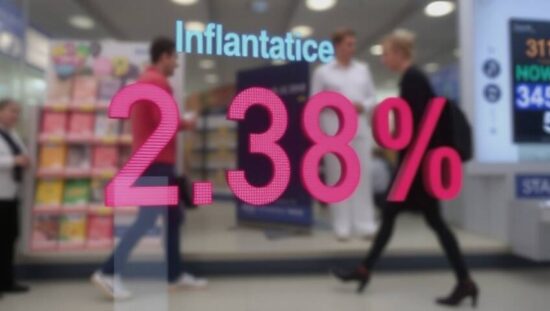The Federal Statistical Office (Destatis) has confirmed the inflation rate for January 2025 at 2.3 percent. At the end of January, a corresponding forecast had already been published. In December, the inflation rate had been slightly higher at 2.6 percent.
According to the Federal Office, the price increase in food had weakened significantly and the energy price development had also dampened the inflation rate in January. In contrast, the above-average price increases for services continued to drive inflation. Compared to the previous month, consumer prices in January fell by 0.2 percent.
The prices for energy products were 1.6 percent lower in January than in the same month of the previous year. Already in December, the price decline had been -1.6 percent. Within the year, the prices for both motor fuels (-0.1 percent) and household energy (-2.5 percent) had retreated. Consumers could benefit from cheaper prices for light heating oil (-1.2 percent), electricity (-3.6 percent) and solid fuels (-8.7 percent).
However, the price declines had weakened significantly within the year. Natural gas (+0.5 percent) and district heating (+9.8 percent) were even more expensive than a year earlier. The reasons for the price development in January 2025 may also include the increase in the CO2 pricing, the increased electricity surcharges and the increased gas network charges.
Food prices were 0.8 percent higher in January than in the same month of the previous year. The price increase in food had thus weakened significantly, after +2.0 percent in December. Food prices had been weaker in the comparison with the previous year only in December 2020, with a rise of +0.3 percent against December 2019.
However, some food groups remained more expensive than in January 2024, such as edible fats and oils (+15.1 percent, including butter: +32.6 percent). Milk and dairy products, as well as eggs (+2.7 percent), also remained more expensive. In contrast, some food groups showed a lower or no price increase, such as bread and grain products (+1.2 percent), meat and meat products (0.0 percent) and vegetables (-2.3 percent).
In January 2025, the inflation rate excluding energy was 2.7 percent, according to the statisticians. The inflation rate excluding food and energy, often referred to as the core inflation, was 2.9 percent. The two key figures have been above the general price level for a year, thus indicating that the price increase was above average in other important goods sectors.
Prices for services as a whole were 4.0 percent higher in January than in the same month of the previous year and continued to be significantly above the general price level. The price increase for services had already reached the value of four percent in October and continued to rise, particularly for social services (+10.1 percent), insurance (+9.9 percent) and stationary healthcare services (+8.0 percent). Many services, such as the maintenance and repair of vehicles (+5.7 percent), catering services (+4.7 percent) and water supply and other services for the apartment (+4.5 percent), were also more expensive.
The net rent increase, which is an important factor in the price development for services, was 2.0 percent and thus below the inflation rate. In contrast, only a few services were cheaper, such as telecommunications (-1.1 percent).
Overall, prices had increased by 0.9 percent from January 2024 to 2025. The prices for consumer goods (+0.9 percent) increased slightly more than the prices for capital goods (+0.5 percent). In addition to the price increase in food (+0.8 percent), some other goods became significantly more expensive, particularly non-alcoholic beverages and tobacco products (each +5.8 percent). Price declines were observed, for example, in furniture and lamps (-1.2 percent), apart from the energy price decline (-1.6 percent).





